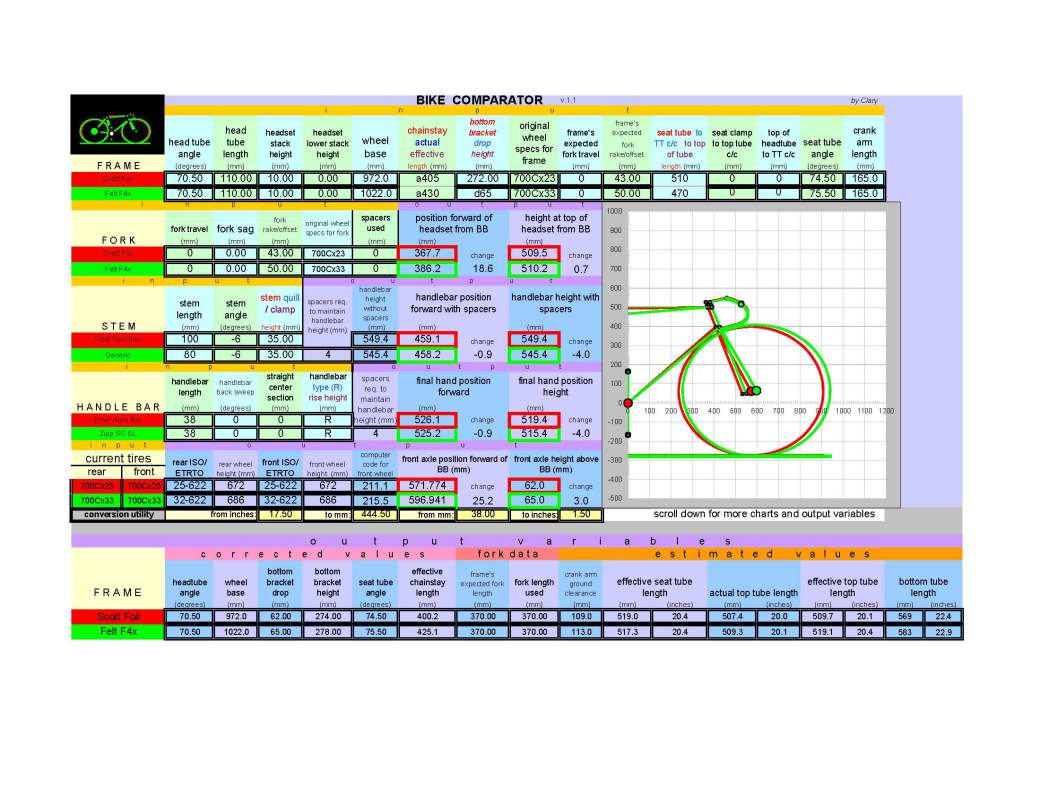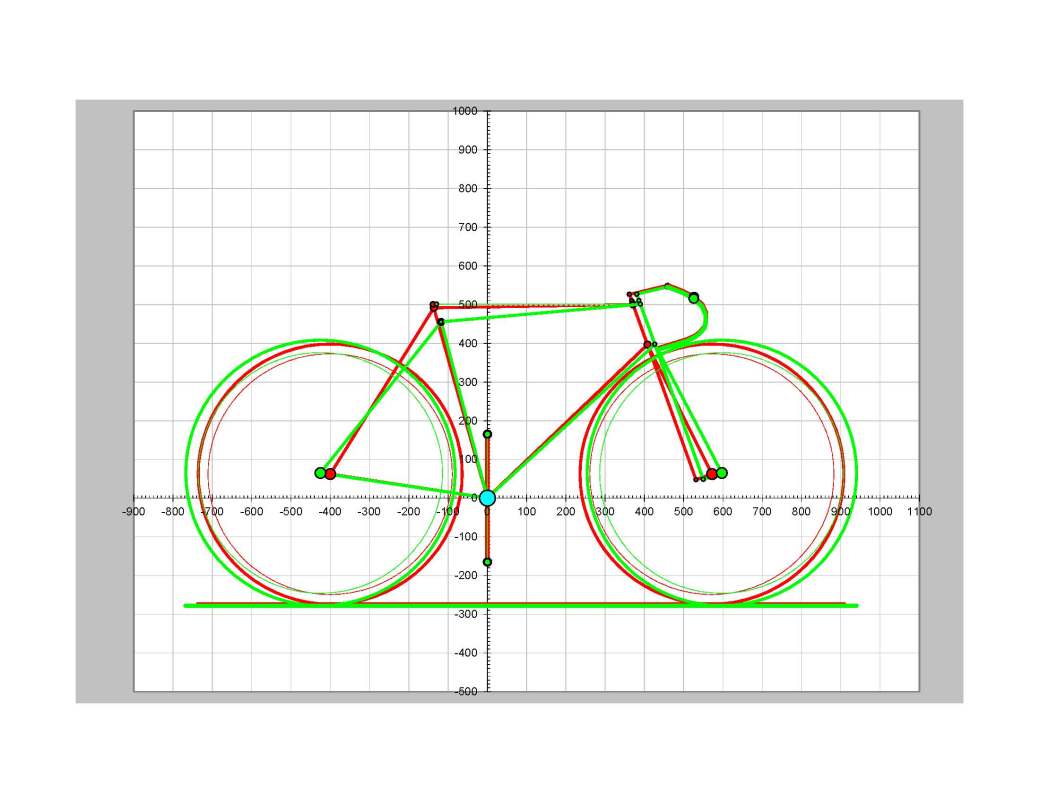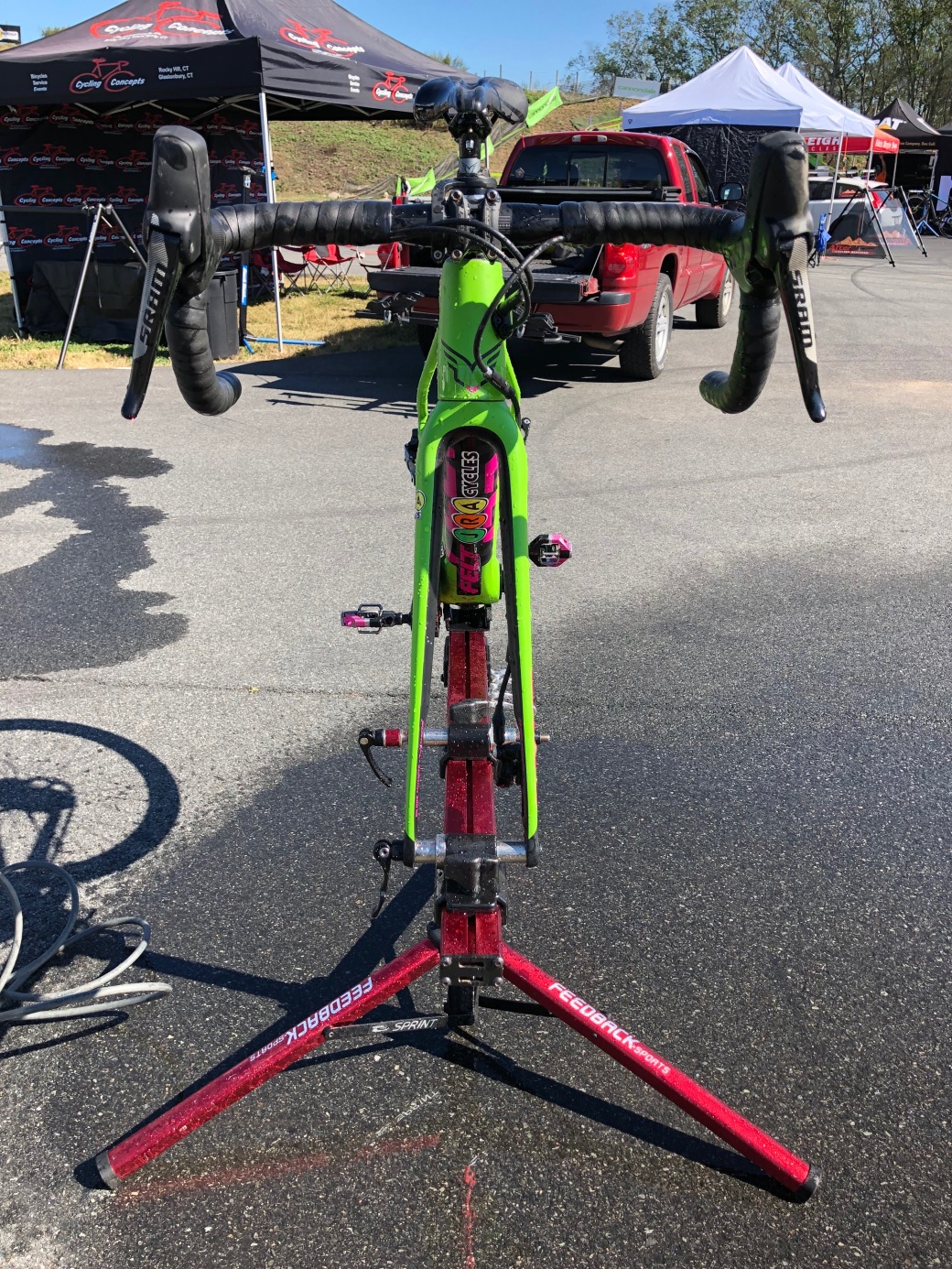Hi! In case you don’t know me in real life, I am a small person. I measure a whopping 62.5 inches tall (no idea what this is in metric), with a 26-27 inch inseam. If you also suffer from below-average height, you may relate to what I’m going to say next.
It can be really hard to find a small bike that fits and handles well. The historical norm was for bike manufacturers to design to an average-sized frame (like a 54!), then shrink and expand the mold to offer a full size run. This would often lead to what I’d call “externalities” in the extreme frame sizes. Bikes would have weird cable routing due to short headtubes and incompatibly placed frame grommets. Toe overlap would be extreme (though I’ll address up-front that it’s almost impossible to eliminate toe overlap entirely).
Certainly for part of the population, “women’s specific” designs have alleviated some issues. For me personally, being a woman with short legs and a long torso (relatively speaking, of course), I don’t fit the prescribed proportions for the adjustments in women’s specific frames. But more importantly, women’s specific designs are more commonly a road-frame thing, not so much a cyclocross frame thing.
To give credit where credit is due, most bicycle manufacturers are making extra small sized frames at this point. Gone are the days of having only two or three reasonable cx bike options. This is my seventh year racing cyclocross and over that time I’ve ridden:
- 2011 Specialized Crux Aluminum – 46cm frame
- 2013 Bianchi Zurigo – 49cm frame
- 2013 Focus Mares AX 1.0 – 48cm frame
- 2015 Focus Mares CX 2.0 – 48cm frame
- 2016 Specialized Crux Elite – 46cm frame
- 2018 Felt F4x – 47cm frame
There are some patterns here, of course. I liked my first crux so much I went back to cruxes two years ago. Specialized has always done a good job designing bikes for the entire population, and the crux is a good aggressive cross bike. Focus made a big jump in geometry between the 2013 and 2015 model years I rode. I enjoyed the geometry of the 2015 Mares and it was a light bike, but it wasn’t made to handle the beating I put my bikes through and I broke it. This year’s bike selection started with talking to my friends at JRA Cycles about which cyclocross bikes they carried and then which frames came small enough for me. Teammate and general rad human Mike Wissell recommended Felt, and I pulled up the handy frame comparison machine.
Note that I’ve used my road bike as a comparison, rather than one of my prior cross bikes. This is because I made significant changes to my fit this spring – I finally found a saddle that allows better forward pelvic tilt, and I moved from 170mm to 165mm cranks. If you’re interested in the relative differences between cyclocross frames, the geometries of the Felt, Crux, and Mares are here.

 The Felt (Green) is a bit longer than my road bike, but otherwise offered a spot on fit transfer. Note the handlebars – the Felt frame is a bit longer (as they are known for being), but with a 1cm shorter stem than stock I could get my hoods in the exact same position as my road bike.
The Felt (Green) is a bit longer than my road bike, but otherwise offered a spot on fit transfer. Note the handlebars – the Felt frame is a bit longer (as they are known for being), but with a 1cm shorter stem than stock I could get my hoods in the exact same position as my road bike.
I highly encourage this exercise for anyone who has trouble translating frame geometry charts into perceptive differences between bikes. This was enough for me, personally, to commit to the bike. I selected the frame that, for me, offers the best spec to price point ratio – the F4x. Now that I’ve had the bike for a few weeks, with a few races under my belt, here are some notes.
- The geometry is on the longer/lower side. There are two headset caps included in the box – the stock one is a taller stack, but there’s also a low stack option. This lets me actually have some amount of saddle-to-bar drop on a cx bike for the first time. By shortening the stem, I was able to replicate my fit without slamming the saddle forward. I can weight the bars for traction in turns, but overall have a balanced position. This is useful for not going over the handlebars, as I am prone to do.
- I changed out the bars for Zipp SC SL ones. The stock bars are stated 40cm, but felt a bit wide for me, so I opted for light and narrow ones – this is purely a personal preference thing.
- Once I swapped the stock 90mm stem for a 80mm stem, my fit almost perfectly replicated my road fit. This allowed for a really smooth transition from road to cross bike from a physical standpoint.
- I changed the stock 40t single chainring to a 38t single ring. I personally find the 40 harder to get on top of, and rarely run out of gears with the 38. I kept the stock 11/32 in the rear.
Once I got my fit dialed, Gary shortened all the cables to fit my low bars/small frame combo and everything is tight. There are no odd cable routing issues to speak of. I actually have quite a bit of saddle height adjustability. I run a saddle height of 620-625mm. This is… a very small number. I’m typically stuck with very little seatpost showing and very little standover. I was pleased to discover that this particular frame has a short seat tube (it is a 47cm frame, after all), which allows for both seatpost adjustability and also standover.

Which is all to say, it’s hard to find great bikes for small people. I’m really pleased with this one. Bonus – the bike can take a beating. I’ve already crashed it hard a few times and each time it’s gone right back to duty with no issues beyond a replaced derailleur hanger (knock on wood).

